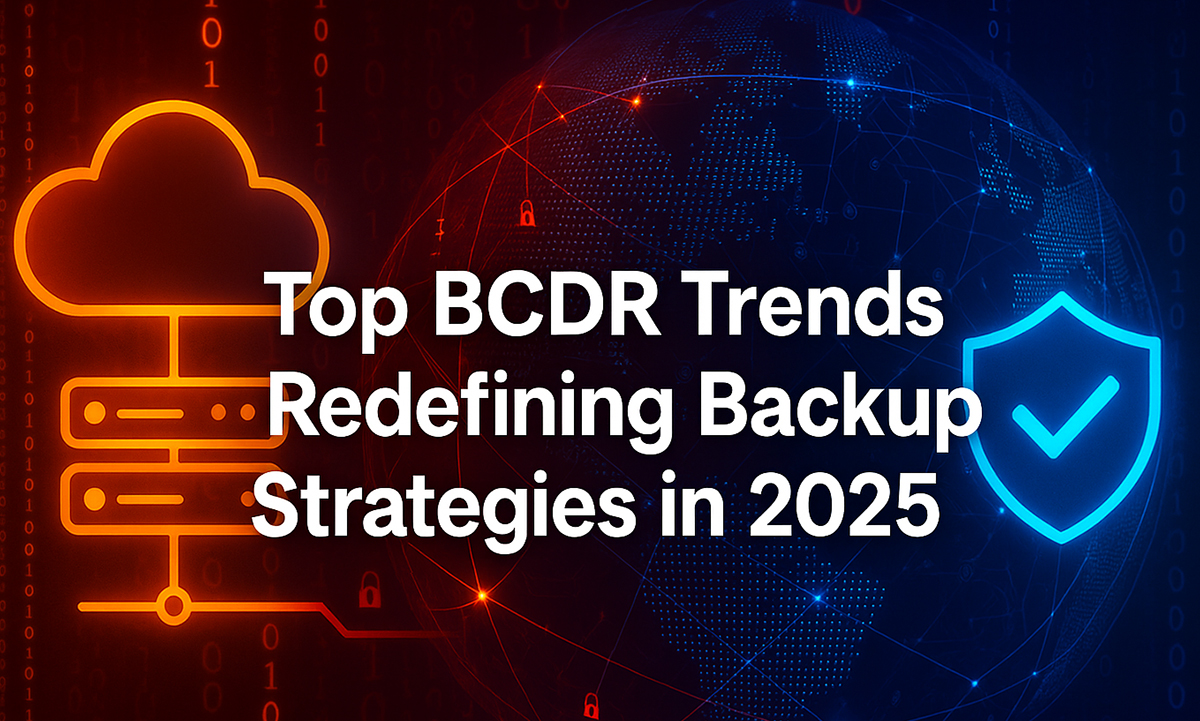No products in the cart.
 BCDR Is No Longer Just About Backup
BCDR Is No Longer Just About Backup
Backup no longer ensures survival. Cyberattacks, hardware failures, natural disasters strike without warning. Recovery speed defines continuity. Delays in operations cause losses. Recovery must be seamless. Operations must resume without disruption. Business continuity demands proactive strategies. Backup is one layer in a broader framework.
From Backup to Business Resilience
Backup stores data. Resilience keeps operations running. Infrastructure targets uptime over recovery. Systems self-heal. Applications auto-failover. Users work without interruption. Data protection includes applications, users, customer transactions. Infrastructure design enables nonstop service. Strategy emphasizes uninterrupted performance.
AI-Driven BCDR Automation
AI monitors system behavior. Algorithms detect anomalies. Recovery activates before outages escalate. AI automates response workflows. Human input remains optional. Downtime prevention operates in real time. Intelligent systems safeguard data, applications, services. AI serves as the backbone of continuity. Goal is continuous operation with machine precision.
Real-Time Recovery as Standard
Delays in recovery are unacceptable. Continuous data protection reduces data loss. Live replication mirrors systems across environments. Failover occurs instantly. Users notice no disruption. Real-time recovery defines resilience. Recovery remains invisible. Productivity continues without pause.
Cloud-Centric Continuity
Cloud anchors BCDR planning. Data and applications span regions. Multi-cloud and hybrid strategies enhance resilience. Redundancy spans providers and geographies. Failover operates dynamically. Workloads shift based on availability and performance. Cloud offers flexibility and speed. Ensures operational uptime under unpredictable conditions.
Cybersecurity and BCDR Converge
Ransomware demands immediate response. Immutable backups isolate compromised data. Zero-trust architectures enforce security boundaries. Recovery plans anticipate intrusion. BCDR acts as a security layer. Recovery maintains continuity and contains threats. Breach isolation and rapid restore reduce damage. Recovery plans address cybersecurity risks. Cyber resilience defines modern BCDR.
Remote Work and Workforce Resilience
Disruption affects people and systems. Remote work spans cities, countries, continents. Employees remain productive during outages. Secure access, cloud collaboration, endpoint protection operate reliably. BCDR covers the remote workforce. Operations depend on digital continuity across locations.
Regulatory Compliance and Legal Readiness
Downtime brings penalties. Regulations require auditable recovery plans. Standards like ISO 22301, GDPR, HIPAA define recovery requirements. Audits demand detailed documentation. Testing stays regular and verifiable. Compliance protects brand reputation. Continuity plans align with regulatory expectations. Legal readiness remains a core BCDR outcome.
Smarter Simulation and Testing
Testing validates readiness. AI-driven simulation recreates realistic disasters. Organizations replicate ransomware, server failures, data corruption. Teams train for critical events. Weaknesses surface before impact. Testing exceeds formality. Plans evolve from scenario outcomes. Simulation builds readiness over compliance.
Edge Computing and Distributed Continuity
Workloads move to the edge. Retail stores, warehouses, smart devices run mission-critical functions. Edge environments lack centralized backups. Local failover and autonomous recovery tools protect remote nodes. Edge continuity extends the resilience perimeter. Operations run beyond traditional data centers.
BCDR-as-a-Service (BCDRaaS)
Many businesses lack internal recovery teams. Service providers offer BCDR-as-a-Service. Automated backups, failover orchestration, compliance tools included. 24/7 monitoring supports small teams. Enterprise-grade resilience becomes available. Service models reduce infrastructure demands. Resilience operates as a subscription model.
BCDR Metrics Evolve
Recovery Time Objective (RTO) and Recovery Point Objective (RPO) remain relevant. New metrics gain focus. SLA adherence tracks uptime. Backup health scores reveal vulnerabilities. Recovery confidence reflects test reliability. Mean Time to Recover (MTTR) measures efficiency. Real-time analytics provide insights. Dashboards show readiness gaps and trends. Metrics direct investment and improvement.
Future-Proofing the BCDR Strategy
Infrastructure adapts. Threats evolve. Technologies change. Plans require regular updates. Modular design increases flexibility. AI-led orchestration improves response speed. Cross-functional teams improve coordination. Strategies address future disruptions. Resilience demands ongoing evolution. Future-proofing depends on proactive architecture. Readiness becomes the priority.
🔐 Ensure data integrity and rapid recovery with actsupport’s expert backup solutions.
🛡️ Stay resilient against disruptions with our tailored disaster recovery services.
Conclusion: Building Resilience Beyond Backup
Backup protects data. Resilience sustains operations. Continuity defines competitive edge. Outages damage reputation, revenue, trust. BCDR is a strategic requirement. Businesses that stay online lead. Recovery speed, system visibility, real-time readiness shape performance. Resilience includes data, systems, people, compliance. Modern BCDR is integrated, intelligent, essential. Success comes to those prepared for disruption.
Follow us on social media: Facebook, Twitter, LinkedIn
Read our newest blog entry: (Implementing Responsible AI with AWS)
Subscribe for free blog content delivered to your inbox



 BCDR Is No Longer Just About Backup
BCDR Is No Longer Just About Backup